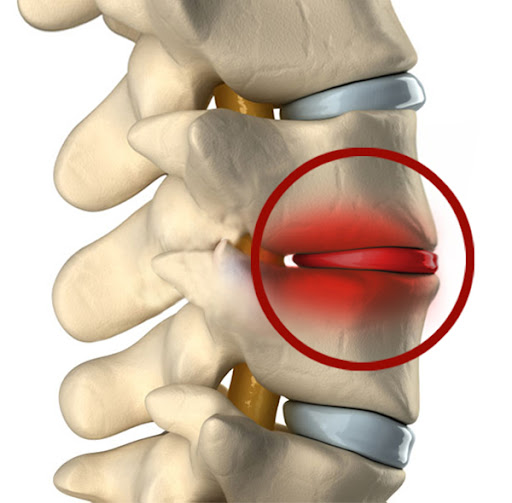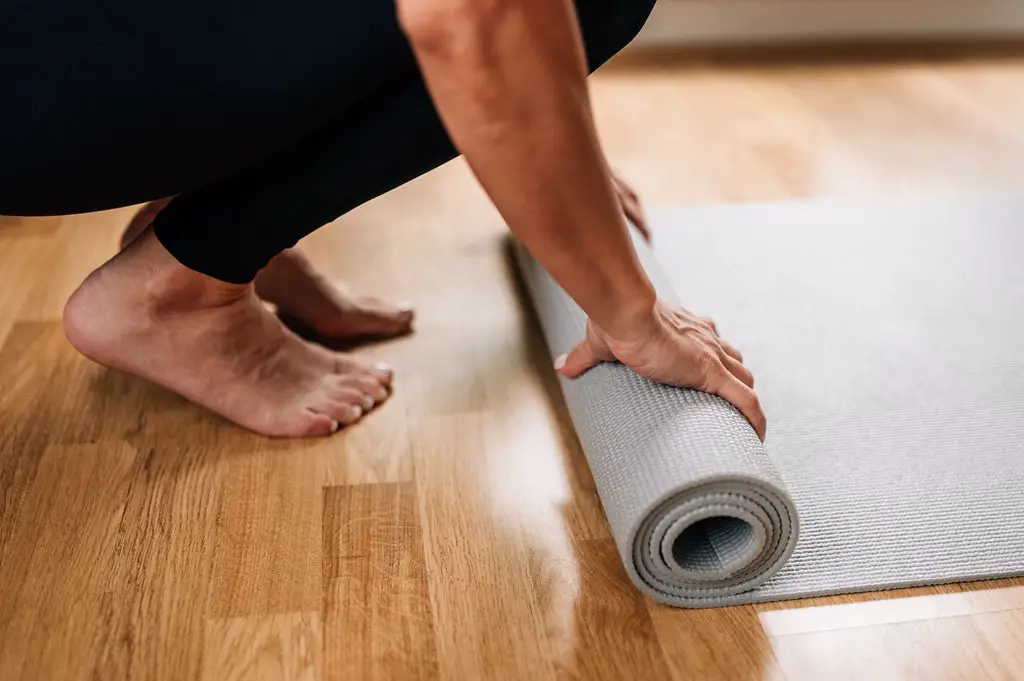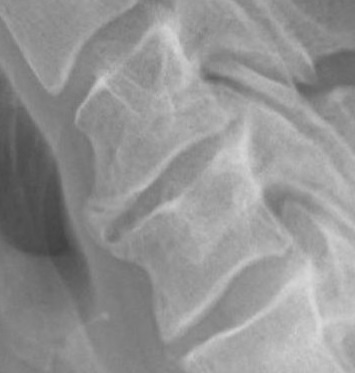Article reviewed and approved by Dr. Ibtissama Boukas, physician specializing in family medicine
Known as the evil of the century, back pain affects a lot of people, especially those who work in front of a desk. It is not without consequence on daily life. Among the many causes of low back pain, we can cite, for example, a disc compression also known as disc pinching. This is the subject of this article.
What is a disc pinch? How to recognize it? What are the causes ? Is it a serious condition? And above all, how to treat it?
Definition: What is disc narrowing?
Above all, to better understand and define the disc pinching, it's better to understand the anatomy of the spine or the spine.
Spine Anatomy
La spine is the structure that supports the body, especially the trunk. It is made up of 33 vertebrae which are separated from each other by the intervertebral disc.
A vertebrate is formed by a posterior arch and a vertebral body (anterior arch). These arches circumscribe the foramen (hole in a bone to allow the passage of muscles, nerves and vessels).
Le vertebral body has the shape of a cylinder segment with a vertical major axis. It is linked to the vertebral discs by its upper and lower face while delimiting the foramen (like a box).
What about disc pinching?
Le pinch ou disc compression is associated with the height of a intervertebral disc that can be found reduces. One of the frequent causes of this height loss is a compression fracture of vertebrae. More precisely, the pinching takes place at the level of the vertebral endplate (of the vertebral body), whichsinks simply or crashes.
This condition can affect most parts of the spine: one or more individualized vertebrae. The most affected are often the lumbar and thoracic. The body, the arch, the ligaments of the vertebra as well as the intervertebral discs can be affected by this fracture. Most often, the settlement is located between the L5 and S1 vertebrae. This is due to the multiple physical stresses that the vertebrae in this position undergo.
There are two types of disc narrowing. If the disc is entirely reached (thinned), we speak of overall pinch. Pinching is also said local if the disc is only partially affected.
Le disc pinching is usually one of demonstrations of the degenerative disc disease.
Le pinched disc no longer adequately fulfills its function of protection against shocks. This is why the disc pinching can be serious. In addition, the fracture may be unstable. Thus, bone debris may touch the spinal cord threatening the nervous system (paralysis, hypersensitivity, etc.)
However, it can also be asymptomatic in certain circumstances.
In the case of osteoporosis, the disc pinching may collapse the anterior superior corner of the vertebra. The other vertebrae are then subjected to pressure and may cause any a cascade of new fractures.
But how to recognize disc pinching?
It should be noted that in the case of a disc pinching, you do not might not necessarily experience back pain. Especially when the fracture is only caused by a bone weakening or an osteoporosis: We then say that the disc pinching is asymptomatic.
In symptomatic cases, on the other hand, the disc compression can be manifested by the following signs:
- Pain in the spine: these pains can have a variable intensity (mild, moderate, acute).
- A blockage in the mobility of the spine: the pain makes certain movements difficult. This can for example prevent the patient from bending over or getting up properly.
- A decrease in height, up to 10 cm. It is sometimes encountered with a kyphosis or exaggeration of the convexity of the upper dorsal zone which becomes rounded.
- A feeling of instability comes with compaction.
- Dysfunction or even loss of muscle (sarcopenia).
- A respiratory gene.
- A gastroesophageal disorder.
What are the factors that cause disc narrowing?
The demonstration of disc pinching is explained by the disc dryness. Its properties ofdepreciation will then be lost, with a threat of gradual deterioration or an degenerative disc disease.
Many are the causes of disc pinching. It is possible that you promote this disease without even realizing it. Here are the common causes:
- Personalized traumas due to bad postures or intense physical activities, or mechanical factors that put a lot of strain on the spine (example: excessive sports, shocks, accidents, etc.). Indeed, these factors lead to contractures causing force displacements on the disc. They are usually more pronounced on one side compared to the other. Thus, when pressures are exerted on the disc, there will be an imbalance. This explains and promotes local pinching, or even protrusions, hernias or other discopathies.
- Personalized deficits in oxygen and certain nutrients, poor circulation of CO2 which promote cellular aging. Due to a lack of replacement and regeneration of cells, the arc and disc of the vertebrae are thus weakened.
- A Dehydration : water is essential for the proper functioning of intervertebral discs. Its content varies according to a 24-hour cycle. They gradually dry out throughout the day to recharge during rest, that is to say during sleep. This is why the excessive practice of sports without recovery favors the drying out and compaction of the discs.
Besides these causes, there are also risk factors which promote the disc pinching:
- old age ;
- sedentary lifestyle (for example: sitting all day);
- stress and fatigue;
- certain cancers (bone metastases);
- taking corticosteroids;
- osteoporosis;
- llumbar osteoarthritis ou zygapophyseal ;
- la herniated disc ;
- menopause…
To have more certainty, it is always better to consult doctors in order to confirm the diagnosis by medical imaging (such as an X-ray, CT scan or MRI for example). Thus, the evolution and the treatment will be closely monitored with greater certainty.
Evolution and prognosis: Can disc pinching disappear?
In the majority of cases, the disc pinching consolidates spontaneously after weeks. If treated in time, its consolidation takes place from the sixth week. However, the delay may vary depending on the patient's bone condition.
Le disc pinching as well as the pain it causes can then disappear. In the case of deformations, they can be irreversible and require specific treatments.
How to treat disc pinching?
Relieve pain
Here are therapeutic ways to relieve pain in case of disc pinching.
- The doctor will prescribe analgesics and anti-inflammatories.
- Physiotherapy or osteopathy to relax muscles and improve functional abilities.
- Alternative treatments to relieve symptoms (acupuncture, acupressure mat, cupping therapy, myotherapy, natural products, Quinton plasma, percutaneous hydrotomy, therapeutic yoga, craniosacral therapyEtc.).
Treating the Causes of Disc Narrowing
To act on the causes of pinching, here are some tips.
- Provide enough calcium and vitamin D through food or synthesized supplements.
- Take medication to fight against osteoporosis, such as bisphosphonates, calcitonin, etc.
What to do to consolidate the fracture?
If you have a vertebral fracture, it is important to follow the doctor's recommendations to heal without complications. For example, the medical team may suggest the following treatments:
- Wear a corset and immobilize the affected area.
- Surgical operations: cementoplasty, kyphoplasty, etc (injection of cement to fill the fracture).
And in serious cases?
The last resort is to perform surgical operations such as placement of a disc prosthesis or arthrodesis.
Prevent disc pinching
Here are some tips for prevent disc collapse.
- Follow a calcium-rich diet (dairy products, soy, etc.)
- Have a good dose of vitamin D to fix calcium optimally. Eat fish and liver. Expose yourself to the sun, as the sun's rays are a natural source of vitamin D.
- Engage in regular, moderate physical activity to promote solidification of bones.
References
Pathology sheet on the " vertebral compaction », by the Montpellier vertebral surgery center
Article on "The anatomy of the spine", by the Faculty of Medicine and Maieutics
https://www.satisform.com/materiel-kine-traitement-pincement-discal.html
https://www.lesmauxdedos.com/pathologies/mal-de-dos/pincement-discal/






